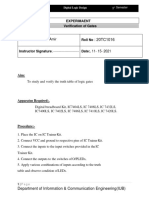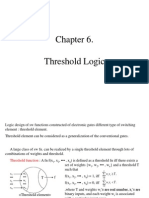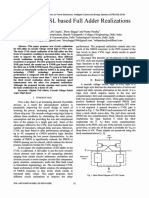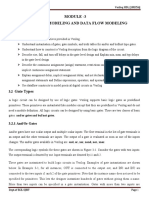0% found this document useful (0 votes)
346 views48 pagesUnit 2 - Gate Level Modelling
This document discusses gate level modeling in Verilog. It begins by introducing gate level modeling as a lower-level approach that uses basic logic gates like AND and OR. Gate level modeling provides a direct translation from hardware schematics to Verilog code using primitives for gates. The document then provides examples of modeling common logic gates like AND, OR, XOR in Verilog and simulating their behavior. It demonstrates modeling gates with multiple inputs and gates with enable signals. Finally, it discusses modeling a basic multiplexer at the gate level in Verilog.
Uploaded by
dave vegafriaCopyright
© © All Rights Reserved
We take content rights seriously. If you suspect this is your content, claim it here.
Available Formats
Download as PDF, TXT or read online on Scribd
0% found this document useful (0 votes)
346 views48 pagesUnit 2 - Gate Level Modelling
This document discusses gate level modeling in Verilog. It begins by introducing gate level modeling as a lower-level approach that uses basic logic gates like AND and OR. Gate level modeling provides a direct translation from hardware schematics to Verilog code using primitives for gates. The document then provides examples of modeling common logic gates like AND, OR, XOR in Verilog and simulating their behavior. It demonstrates modeling gates with multiple inputs and gates with enable signals. Finally, it discusses modeling a basic multiplexer at the gate level in Verilog.
Uploaded by
dave vegafriaCopyright
© © All Rights Reserved
We take content rights seriously. If you suspect this is your content, claim it here.
Available Formats
Download as PDF, TXT or read online on Scribd
/ 48





























































































